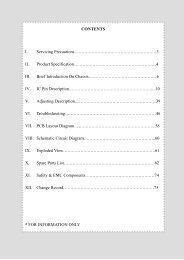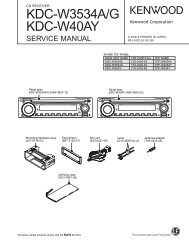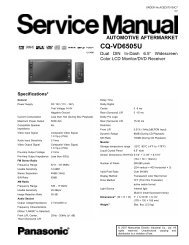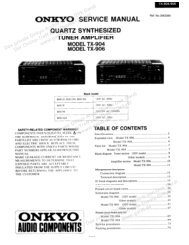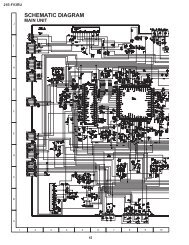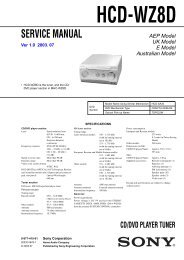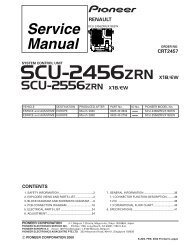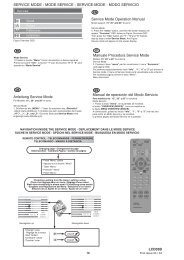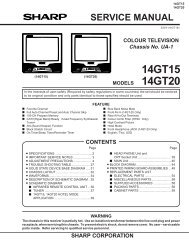Technology of Q 2500 colour TV set
Technology of Q 2500 colour TV set
Technology of Q 2500 colour TV set
Create successful ePaper yourself
Turn your PDF publications into a flip-book with our unique Google optimized e-Paper software.
<strong>Technology</strong> <strong>of</strong> Q <strong>2500</strong> <strong>colour</strong> <strong>TV</strong> <strong>set</strong>power supply, then the c.r.t. could be damagedif no protective measures are taken.To prevent this, transistor Q 2616 is connectedto the beam current data. In normaloperation the transistor conducts and L levelis applied to its collector thus making the circuitinoperative.If the described fault occurs, the base <strong>of</strong> thediode split transformer becomes negative dueto the high beam current, Q 2616 blocks anddue to the 5 V on its collector diode D 2618conducts.Pin 94 <strong>of</strong> the CCU is <strong>set</strong> to H level andswitches the device to standby.2.7.2 HFLB protective circuitIf the line output stage is too strongly overloadedby a fault, the protective circuits discussedcannot respond in any way. Excessiveoverloading <strong>of</strong> the H output stage causes theline flyback pulse to reduce in amplitude. TheHFLB pulse on pin 10 <strong>of</strong> W 1511 is thereforemonitored by a protective circuit. In normaloperation this pulse has an amplitude <strong>of</strong>approx. 35 V. Via the 20 V zener diodeD 2581 this pulse makes Q 2581 conductivein rhythm with the line frequency. CapacitorC 2584 is switched to earth cyclically with theline frequency via Q 581 and cannot thereforecharge up. This means that L level is felt onC 2584l. If a fault in the deflection circuitcauses HFLB to fall below 20 V, zener diodeD 2581 and Q 2581 block. C 2584 charges toH level. This H level is fed via D 2586 to pin94 <strong>of</strong> the CCU, which switches the deviceback to standby operation.2.8 Speed modulatorThe device is also equipped with a speedmodulator. It is located between the RGB outputs<strong>of</strong> the digital unit and the RGB outputstages on the c.r.t. board. It controls thespeed <strong>of</strong> the electron beam in the horizontaldirection, which increases picture sharpnessand prevents a defocusing effect at high contraston vertical, very bright areas <strong>of</strong> the picture.2.8.1 GeneralThe speed modulator evaluates high frequencychanges in the picture signal andsends them to an additional winding in thedeflector. The resulting magnetic field overlaysthe normal field produced by the deflectionwinding. By this method, the deflectionspeed is adapted to the picture content, whichleads to a definite improvement in picturesharpness.A picture change in a positive or negative directionproduces a signal, as shown in thefollowing drawing and thereby supplies theadditional winding in the deflector.The amplitude <strong>of</strong> the signal and the modulationlevel <strong>of</strong> the contrast are therefore dependenton the <strong>set</strong>ting and the slope <strong>of</strong> thesignal change.One could also modulate the deflection currentdirectly, which would however, be moreexpensive than the second winding.Document Q <strong>2500</strong> 34 © Loewe ProCollege



